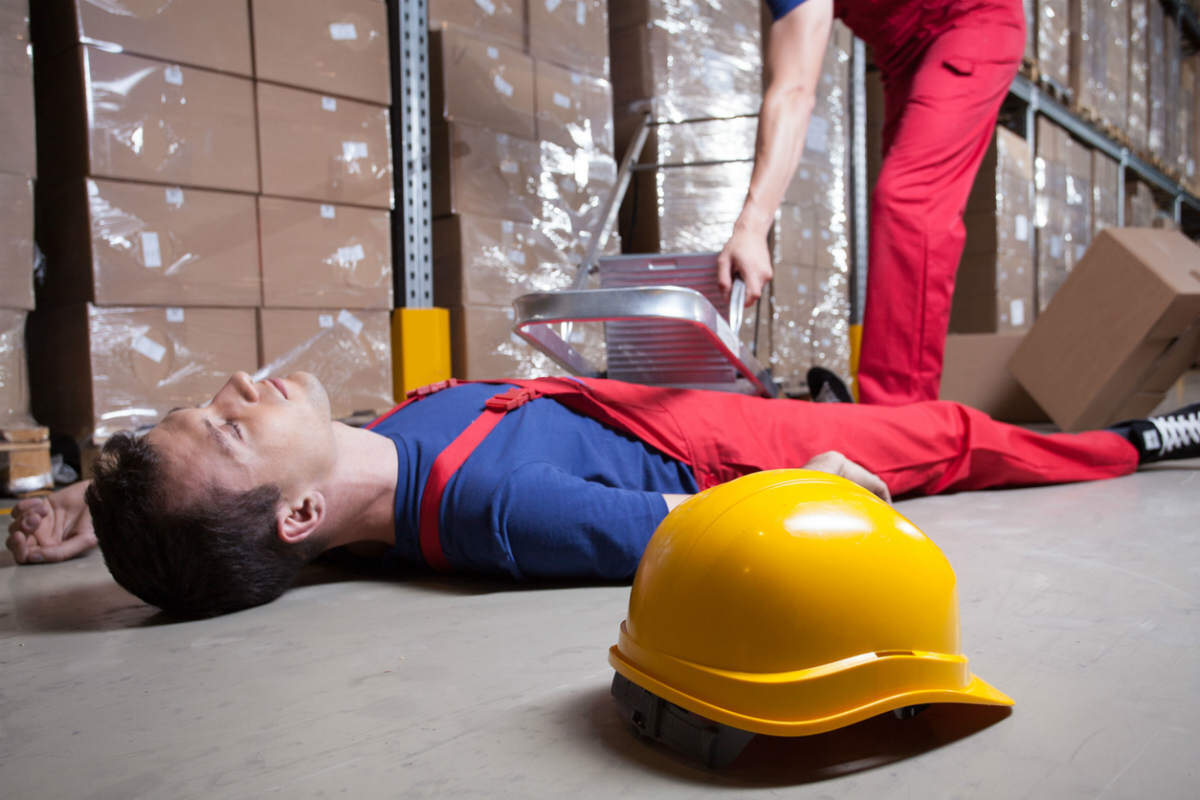An unguarded opening at a job site is an accident waiting to happen.

A fall to a lower level through an ungaurded opening can cause serious injuries, leaving a worker unable to work and support his or her family. The Occupational Safety and Health Administration (OSHA) has several regulations in place for employers to follow; however, workplace injuries and fatalities due to unguarded or insufficiently guarded openings are still quite common. Fall protection violations are one of the most frequently cited OSHA violations. On a list of top 10 causes of disabling work injuries compiled by the Liberty Mutual Workplace Safety Index, falls to a lower level rank fourth. Each year, almost 300,000 workers get injured due to workplace falls.
Types of Unprotected Openings
The most common types of unguarded openings at work sites are:
- open excavations
- skylights, windows, and other roof openings
- pier holes
- floor openings
High Risk Workers
Falls are among the most common causes of fatalities in the construction industry. However, injury causing falls can occur in various other occupations and industries as well. According to the Bureau of Labor Statistics, the highest incidences of falls to a lower level are reported in the following industries:
- agriculture, fishing and hunting, forestry
- transportation and warehousing
- natural resources and mining
- public utilities
- arts, entertainment, and recreation
Work-Related Fall Injuries
The most commonly reported injuries from falls include:
- strains
- sprains
- tears
- bruises and contusions
- fractures
- pain and soreness
St. Louis Injured Worker Attorney
It is not uncommon for workers to suffer a fall injury at work. Injured workers can receive workers’ compensation benefits covering their medical bills and part of lost wages. Workers’ compensation is a no-fault system, which means you do not have to prove workplace negligence or that the opening you fell through was insufficiently guarded. However, complications can still arise in your claim and the employer or the insurance company may try to reduce or deny the benefits. Discuss your case with a St. Louis injured worker attorney. Call The Law Office of James M. Hoffmann at (314) 361-4300 for a free consultation.
Workplace Injury and Accident Causes
Asbestos Exposure
Asbestos Removal
Second Hand Asbestos Exposure
Sexual Assault Workplace
Physical Assault at Workplace
Workplace Injuries Assembly Line
At Fault Accident
Workplace Attack
Benzene Exposure
Injured on Lunch Break
Building Collapse
Workplace Bullying
Chemical Exposure in the Workplace
Chemical Hazards in the Workplace
Cold Stress in the Workplace
Combustible Dust Explosion
Computer Use
Construction Site Accident
Conveyor Belt Accident
On the Job Injury Cause by Coworker
Crane Accident
Injuries from Desk Jobs
Diesel Exhaust Fumes Exposure
Digging Injury
Breaking Company Policy
Drowning at Work
Workplace Drug Use
Electrical Workplace Accidents
Elevator Accident
Equipment Accident
Ergonomics in the Workplace
Excessive Overtime
Workplace Explosion
Extreme Danger
Fall at Work
Fire in the Workplace
Slicer Accident
Forklift Accident
Walk in Freezer
Gas Pipeline Accident
Hard Work
Workplace Hazardous Substances
Hazardous Equipment in the Workplace
Heavy Machinery Accident
Horseplay in the Workplace
Danger at Workplace
Insomnia in the Workplace
Jumping Accident
Ladder Falls at Work
Loading Dock Accident
Machinery Accident Workplace
Equipment Failure Accident
Mining Accident
Mold in the Workplace
Nail Gun Accident
Workplace Noise
Non Collision Accident
Heavy Objects
Workplace Office Equipment
Opioid Use
Injury at Work Due to OSHA Violation
Overexertion Injuries at Work
Use of Pain Killers
Power Tool Injury
Inadequate PPE
Repetitive Motion Injuries in the Workplace
Mansfield Bar
Scaffolding Accident
Secondhand Smoke in the Workplace
Side Effects
Silica Exposure
Sleep Disorder
Slip and Fall Injuries in the Workplace
Stairs at Work
Struck by a Vehicle
Tar Fumes
Toxic Chemical Exposure
Toxic Fumes in the Workplace
Car Accident While Working
Trench Collapse
Trips at Work
Unsafe Working Conditions
Workplace Violence
Welding Injury
Winter Hazards in the Workplace
Working Shifts
